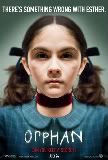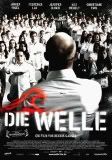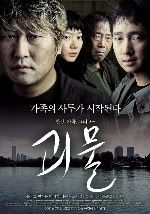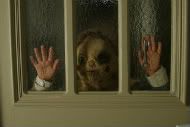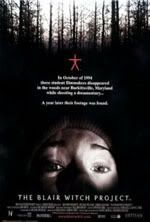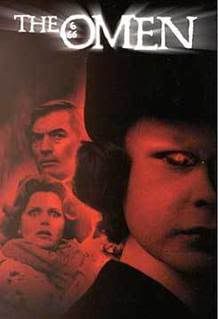
El Orfanato/The Orphanage directed by Juan Antonio Bayona and produced by Guillermo del Torro in 2007/8, is in many ways a classic horror movie which I believe provides an interesting differential reading in terms of Audience, Narrative and Representations.
Despite being a foreign language film, The Orphanage was successfully released in America (Box Office $8m) and Britain (£1.5m) in both multiplex and art house cinemas. It was subsequently released onto DVD format in 2008. There are in my opinion several crucial factors in its success with its targeted demographic which would include the 15-25 student range but might also be extended for reasons outlined below, to include a broader 29-40 range.
Firstly although intertextual in some ways, the film is clearly of the popular Horror genre. Indeed it can be argued that it is a film which uses very traditional horror elements as opposed to CGI and gore to entertain and please its audience. There are ghostly noises, night time sequences a creaking old house as the terrible place and many more dry, psychological horror elements. It contains many enigma pleasures for the audience such as the mysterious Tomas, the disappearance of Simon and intriguing female characters such Benigna and Aurora. Significantly the film also uses children as the otherness or more specifically as connected somehow to the otherness.
This is an aspect of the Horror genre which would help target and please an audience as it has done historically in cinema. Films such as Village of the Damned, The Shining, The Omen and The Exorcist have all been successful in this way combining children with otherness and the punishment of adults. Furthermore the film is similar to The Others/2001 (also made by a Spanish speaking director) and this was successful with cinema goers. The film’s central idea – a mother’s desire to be reunited with her missing child is universally verisimilar to audiences and can be seen often in cinema, most recently in Clint Eastwood’s Changeling.
A second key factor in our discussion of Audience is the recent success of foreign language films, especially horror films, with American and British cinema goers. Asian cinema provides an excellent example of this with films like The Grudge, Ring, The Eye and The Host.
However it is also true to say that in recent years Spanish and Mexican film makers have had a great impact on Audiences. Film makers such as Cuaron (Children of Men/Harry Potter), Inarritu (21 Grams) and especially Del Toro (Pan’s Labyrinth/Hellboy) are all leading Directors. So it is true to say that audiences would be interested in their products. The Orphanage was sold to audiences with the tag line ‘From the makers of Pan’s Labyrinth’ showing the pulling power of del Toro. Indeed the two films have many similarities which would appeal to the targeted demographic, using children and other worlds as the centre of their stories.
I would also argue that broadly speaking Spanish speaking film makers also present females as very powerful constructs in their film which is true of The Orphanage with the central character of Laura and I feel this would help strengthen the film’s attraction to a young, modern audience who find less stereotypical female constructions more appealing in films.
A differential reading of The Orphanage also reveals a good deal about its narrative aspects. I believe that the Classic Narrative Formula can be applied to the film. As I have mentioned earlier the film has a strong verisimilar world. The loving couple setting up home with their adopted/ill son is something which a 15 -39 audience would immediately recognise as would the old orphanage building with its many secrets. Laura’s subsequent battle to recover her missing son and the lengths she will go to be reunited with him are all verisimilar.
In line with CNF the film can be divided into three acts or sections. The Equilibrium is established at the start of the film with the brightly lit garden full of floating flower seeds and the warm foley noises of children at play. The hide and seek scene is shot in a wide with the house in the background and the whole scene anchors a feeling of happiness.
There are potentially several moments of disequilibrium for the Classic Narrative. The first is with a phonecall to the orphanage which one of the ladies takes with her back to the camera. In a slow zoom we learn that Laura is to leave. This action could be said to be the start of Laura’s struggle to restore happiness.
Another possible disequilibrium is the argument between Laura and her adopted son, Simon. Simon rebukes his mother for not telling him the truth about their relationship. This then leads onto to his disappearance and the body of the film. However it is the disappearance of Simon which is the must obvious moment of disequilibrium as this in turn causes the exploration of the house and the revelation of its dark secrets. This proves to be highly pleasurable for the demographic as in engages them in the unravelling of the film’s enigmas.
The restoration of equilibrium comes with the discovery of Simon’s body and Laura’s decision to take her own life thus reuniting her with her son and her murdered friends. This although a depressing ending is signalled by strong light from the lighthouse and uplifting music so in a sense it provides a decisive and satisfying narrative closure for the audience.
Undoubtedly the film works in a cause and effect sequence. The removal of Laura from her friends creates a mystery about what happened to them and when Simon goes missing a series of events are caused which results in Laura’s discoveries about what becomes a very menacing house (throughout the disequilibrium section the house is often shot at a low angle in low key lighting).
A differential reading of narrative of The Orphanage also suggests that the film can be understood in terms of Propps morphology or 31 narratemes as they are sometimes called. The 1st and 2nd narratemes are clearly evident – someone goes missing and the hero is warned. These obviously apply to Laura and the disappearance of Simon. As is suggested in Propps later narratemes the hero chooses action - we see Laura act decisively in her pursuit of the truth even to the extent that her husband leaves her alone in the terrible place as the final girl.
It is interesting when applying Propp’s 31 narrateme – hero ascends the throne – as in a sense Laura has ascended but to the place of the dead with the murdered children. However she is shot sitting with the children surrounding her which suggests her high status to the audience.
As stated earlier the film successfully engages and pleasures its audience with many hermeneutic codes. There is an abundance of Barthian snares especially in the equilibrium and disequilibrium sections of the film. Who are Simon’s friends? What is his illness? Where has he gone? Who are Benigna and Tomas? What is it that Aurora sees during the séance? Furthermore Laura’s dramatic discoveries in the shed and her invitation to the ghosts to play, are exciting action codes for the demographic.
Laura is a fascinating female construct. She clearly is stereotypical in some aspects of her portrayal. She is a doting mother caring for her son. This is underlined by her comforting him during the night with stories. In this sense she fits with the traditional construction of females in American cinema as either mothers or objects.
However it quickly appears that Laura is brave and perceptive. We see this in her tackling of Benigna and her refusal to rule out any possibility that her son may still be alive. Her determination is cleverly contrasted with her husband’s surrender and departure from the house. It is also interesting to note that her journey through the film throws up many physical obstacles. Her hand is smashed in the door, her leg is broken, she climbs into an oven and is covered in flour (making her ghostlike) as she discovers body parts. There is something of an action hero about Laura. Indeed her decision to destroy herself at the end to be with her son and old friends goes beyond usual action hero endings. This reading of Laura’s character shows her in many ways as an archetypal construction which is enjoyable for a modern audience.
Furthermore the film has three other strong and varied female constructs in Benigna, Aurora and Pilar and these females all present different attitudes towards Laura’s crisis. Benigna is perhaps the most stereotypical in terms of the horror genre as she is part otherness and killer. Her construction is complicated however by the fact that she too is a mother who lost a child. Aurora is also connected with the otherness in the sense that she is a paranormal psychic. The idea that most psychics are female could be argued but Aurora’s words of guidance to Laura ‘people say seeing is believing but it’s the other way round’ become very true as the narrative unfolds. Pilar offers the audience a female authority figure as she is connected with the Police and the investigation into Simon’s disappearance. She is rational and compassionate as is seen in her exchanges with Laura in hospital. However she is also filmed in a two shot with Carlos underlining her disbelief in the psychic powers displayed by Aurora.
I believe it is true to say that the film presents a range of powerful and engaging female constructs which the demographic would find pleasurable and to an extent verisimilar. It is possible to argue that the film presents a matriarchal world as opposed to a patriarchal one which is usually the case in a male dominated cinema industry.
However one could also argue that all the females in the film are engaged in the discovery of Simon who is a male. Indeed Laura is partly to blame for his death and destroys herself as a kind of atonement for his death. Therefore there is an argument that the females ultimately are organised around a male. These readings all amount to a very interesting study of El Orfanato.



